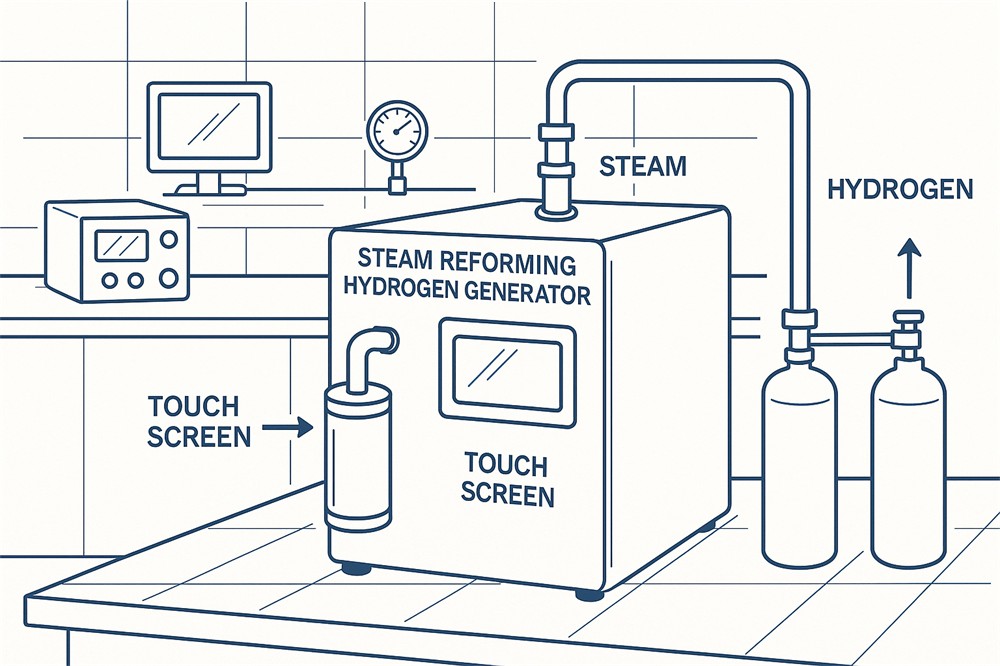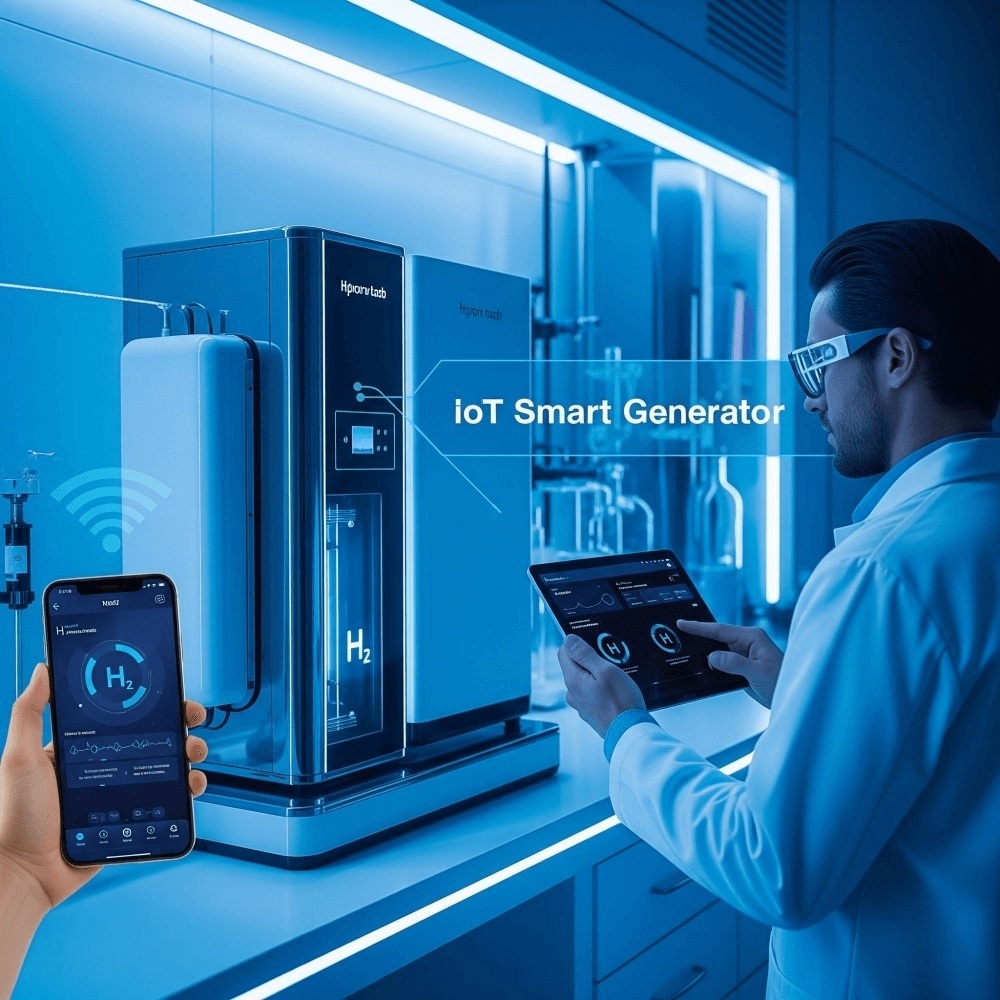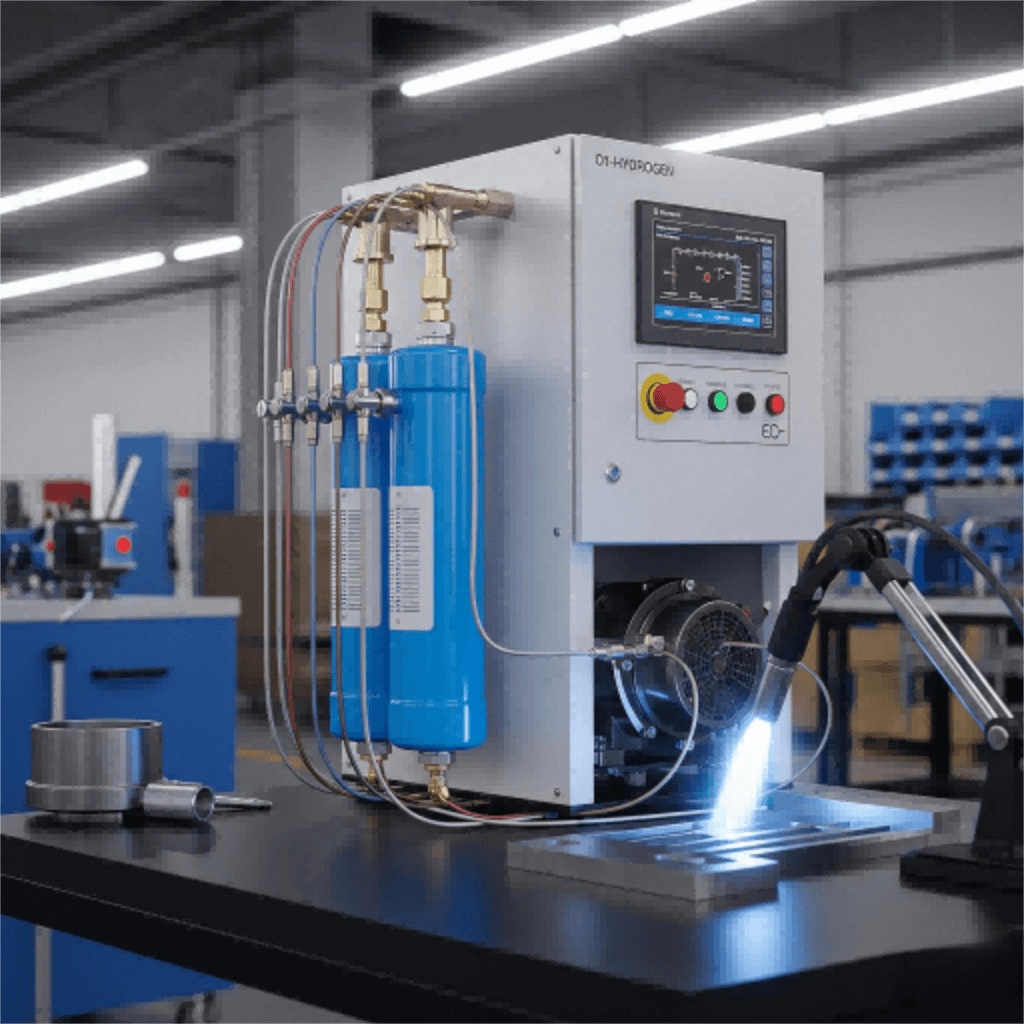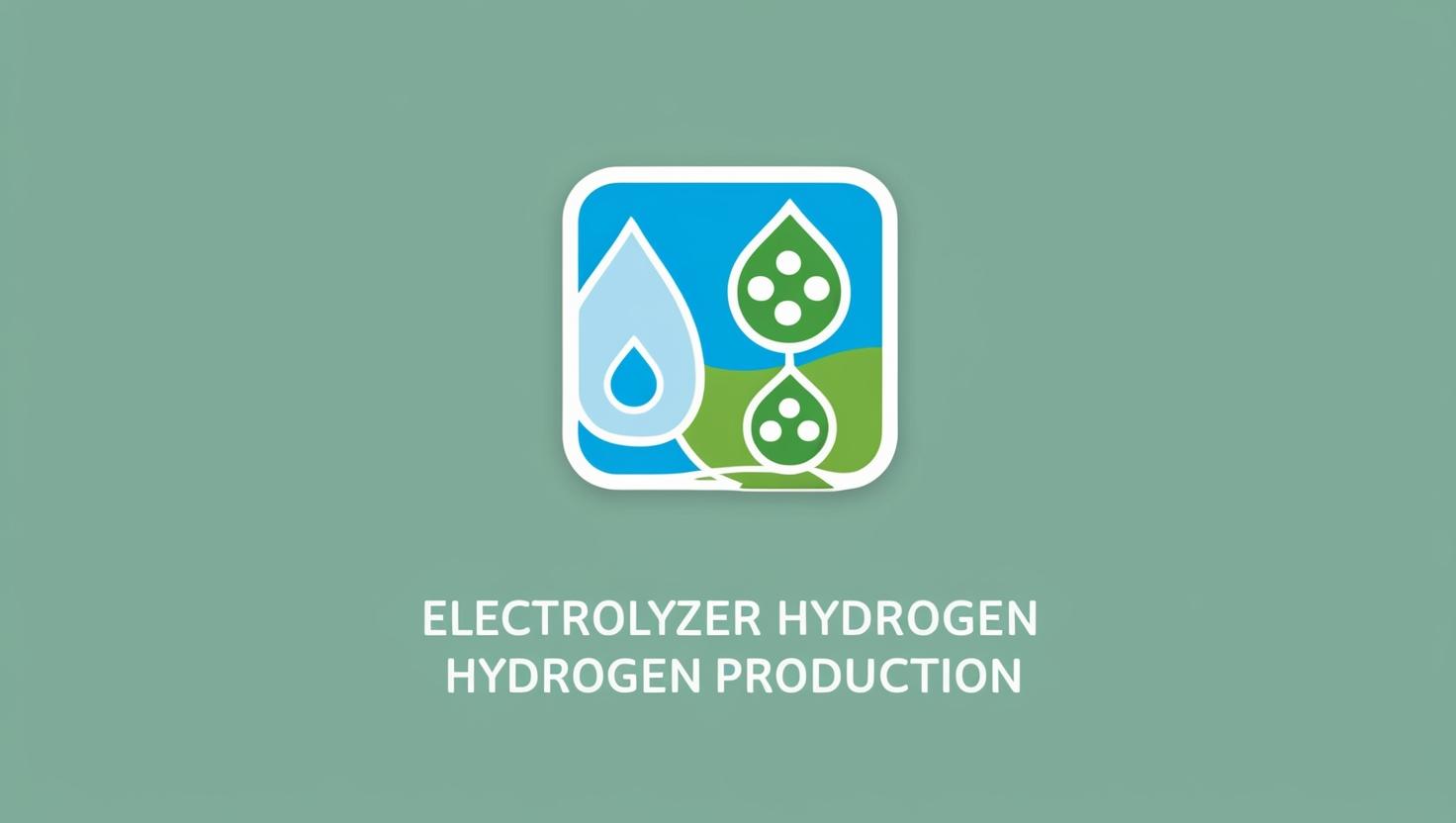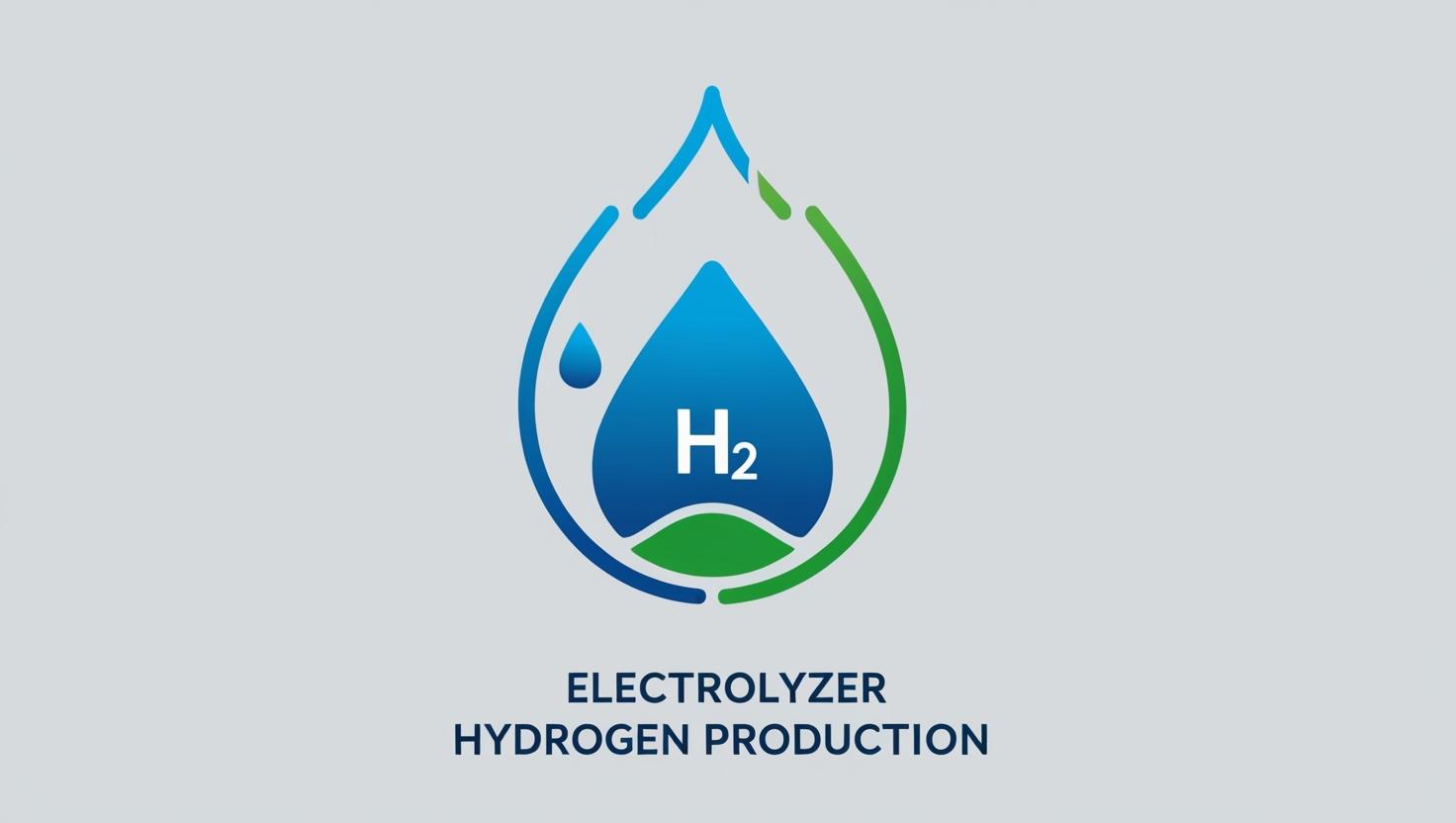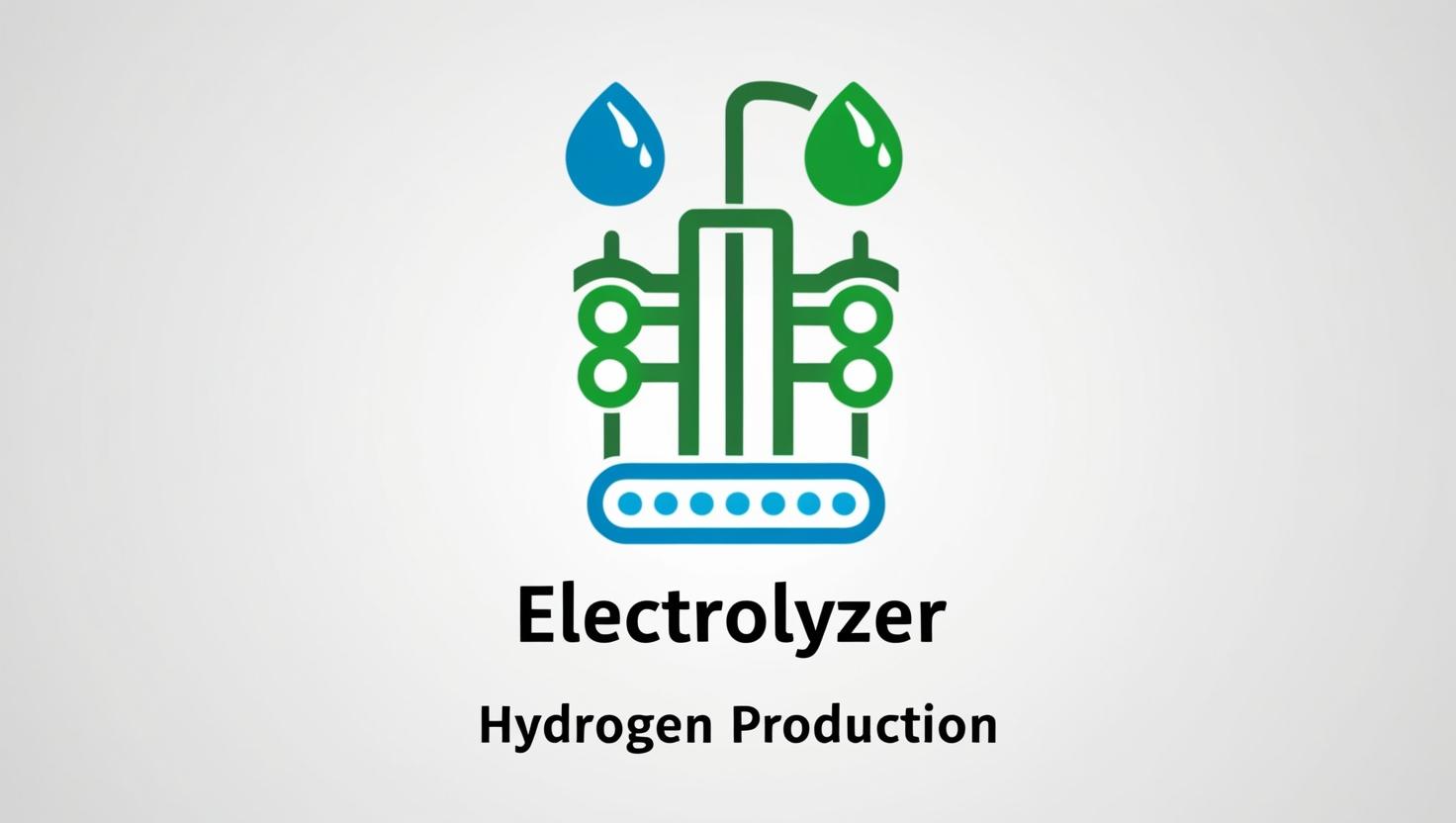The Efficiency of PEM Electrolysis for Green Hydrogen Production. 🔋💧 The quest for cleaner energy sources has put green hydrogen in the spotlight, and Proton Exchange Membrane (PEM) electrolysis is a key technology for its production. But just how efficient is this method? Understanding the efficiency of PEM electrolysis is crucial for assessing its viability and role in a sustainable energy future.
This article dives into the details of PEM electrolysis efficiency, the factors that influence it, and its prospects.
I. Introduction
A. What is PEM Electrolysis?
PEM electrolysis is an electrochemical process that splits water (H₂O) into hydrogen (H₂) and oxygen (O₂) using electrical energy. The “PEM” refers to the Proton Exchange Membrane, a specialized polymer electrolyte that selectively conducts protons (H⁺ ions) while separating the product gases. In a PEM electrolyzer, water is supplied to the anode, where it oxidizes to form oxygen gas, protons, and electrons.
The protons migrate through the PEM to the cathode, where they combine with electrons (supplied via an external circuit) to produce high-purity hydrogen gas.
B. Importance of Efficiency in Hydrogen Production
Efficiency in hydrogen production is paramount for several reasons:
- Cost-Effectiveness: Higher efficiency means less electricity is required to produce a given amount of hydrogen, directly impacting the operational costs and the overall price of green hydrogen.
- Sustainability: When the electricity used is from renewable sources (like solar or wind), higher efficiency ensures that these valuable green electrons are used optimally, maximizing the environmental benefits.
- Resource Optimization: Efficient systems make better use of capital investments and raw materials.
C. Thesis Statement
This article will detail the current efficiency of PEM electrolysis, explore the various factors that influence its performance, compare it with other electrolysis technologies, and discuss its crucial role in the burgeoning hydrogen economy.
II. Defining and Measuring PEM Electrolysis Efficiency
A. How is Efficiency Calculated?
The efficiency of PEM electrolysis can be defined in several ways, but it generally refers to how effectively electrical energy is converted into chemical energy stored in hydrogen.
- Based on Heating Value:
- Higher Heating Value (HHV): This considers the total amount of energy released when hydrogen is combusted, including the energy from water vapor produced.
- Lower Heating Value (LHV): This excludes the energy of water vaporization. Efficiency is often quoted based on LHV (approx. 33.3 kWh/kg of H₂) or HHV (approx. 39.4 kWh/kg of H₂). The electrical energy input is compared to these values.
- Formula: Efficiency (%) = (Energy content of H2 produced (HHV or LHV) / Electrical energy consumed) × 100
- Higher Heating Value (HHV): This considers the total amount of energy released when hydrogen is combusted, including the energy from water vapor produced.
- System vs. Stack Efficiency:
- Stack Efficiency: Refers to the efficiency of the core electrochemical cell stack itself.
- System Efficiency: Encompasses the stack efficiency plus the energy losses from auxiliary components like power electronics (AC/DC converters, DC/DC converters), cooling systems, water purification, and gas drying/purification.
System efficiency is always lower than stack efficiency but provides a more realistic measure of overall performance.
- Stack Efficiency: Refers to the efficiency of the core electrochemical cell stack itself.
B. Typical Efficiency Range of PEM Electrolysis
Currently, state-of-the-art PEM electrolysis systems typically exhibit system efficiencies ranging from 60% to 80% based on the HHV of hydrogen. Stack efficiencies can be higher, often exceeding 80% under optimal conditions.
- Current State-of-the-Art Performance: Commercial systems are continuously improving, with newer generations pushing the upper boundaries of this range. Research and development efforts are focused on reaching and exceeding 80% system efficiency.
- Benchmarking: Compared to older alkaline electrolysis technology, PEM traditionally had slightly lower efficiency but offered other advantages. However, modern PEM systems are becoming increasingly competitive in efficiency as well.
C. Energy Consumption
A practical way to express efficiency is through specific energy consumption, typically measured in kilowatt-hours per kilogram of hydrogen produced (kWh/kg H₂).
- The theoretical minimum energy required to produce 1 kg of hydrogen is about 39.4 kWh (based on HHV).
- Modern PEM electrolyzers typically consume between 45 and 55 kWh of electricity to produce 1 kg of hydrogen at the system level. Lower values in this range indicate higher efficiency.
III. Factors Affecting PEM Electrolysis Efficiency
Several operational, component-level, and system-level factors influence the efficiency of PEM electrolysis.
A. Operating Parameters
- Current Density: Higher current densities increase hydrogen production rates but also lead to higher voltage requirements (due to increased ohmic and activation losses), which can reduce efficiency. Operating at an optimal current density is key.
- Temperature and Pressure:
- Increasing the operating temperature generally improves reaction kinetics and ionic conductivity, potentially enhancing efficiency. However, it can also accelerate degradation. PEM electrolyzers typically operate between 50-80°C.
- Higher operating pressures can reduce the need for downstream hydrogen compression, which saves energy at a system level. However, operating the stack itself at very high pressures can sometimes slightly decrease its intrinsic efficiency.
- Increasing the operating temperature generally improves reaction kinetics and ionic conductivity, potentially enhancing efficiency. However, it can also accelerate degradation. PEM electrolyzers typically operate between 50-80°C.
- Water Purity and Flow Rate: High-purity deionized water is essential to prevent membrane and catalyst contamination, which can degrade performance and efficiency over time. Proper water flow rates ensure adequate reactant supply and heat removal.
B. Component Performance
- Membrane Electrode Assembly (MEA) Quality: The MEA is the heart of the PEM electrolyzer. Its components significantly impact efficiency:
- Membrane: Thinner membranes reduce ohmic resistance, but they must be robust enough to prevent gas crossover.
- Catalyst: Highly active and durable catalysts (typically platinum group metals like iridium for the anode and platinum for the cathode) reduce the activation overpotential, meaning less wasted energy to initiate the reactions.
- Membrane: Thinner membranes reduce ohmic resistance, but they must be robust enough to prevent gas crossover.
- Bipolar Plate Design: These plates distribute reactants, collect current, and provide structural support. Optimized flow field designs and low-resistance materials enhance efficiency by minimizing pressure drops and ohmic losses.
C. System Level Considerations
- Power Electronics Conversion Efficiency: AC electricity from the grid or renewable sources must be converted to DC power for the electrolyzer stack. The efficiency of these power converters (typically 95-98%) impacts overall system efficiency.
- Balance of Plant (BOP): Energy consumed by pumps for water circulation, cooling systems, gas-liquid separators, and hydrogen purification/drying systems contributes to system losses and reduces overall efficiency.
- Ohmic Losses: Resistance in cell components (membrane, electrodes, bipolar plates) and interconnections leads to energy loss as heat. Minimizing these losses through material selection and design is crucial.
IV. Comparing PEM Electrolysis Efficiency
A. PEM Electrolysis vs. Alkaline Electrolysis
- Alkaline Electrolysis: This is a more mature technology, traditionally known for slightly higher efficiencies (can reach >70-80% system efficiency in advanced designs) and lower capital costs due to the use of non-noble metal catalysts.
However, alkaline systems typically have lower current densities, a slower dynamic response to variable power input (less ideal for direct coupling with renewables), and produce lower-purity hydrogen that may require further purification. - PEM Electrolysis: Offers high current densities (leading to smaller footprints), rapid start-up and shutdown, excellent dynamic response, and produces very high-purity hydrogen directly. While historically slightly less efficient or more expensive, advancements are closing these gaps.
B. PEM Electrolysis vs. Solid Oxide Electrolysis Cells (SOEC)
- SOEC: Operates at much higher temperatures (700-1000°C) and can achieve very high efficiencies (potentially >90%), especially when integrated with high-temperature heat sources (e.g., industrial waste heat, nuclear power). SOEC can also co-electrolyze steam and CO₂ to produce syngas.
However, they face challenges related to material stability, thermal cycling, and longer start-up times. - PEM Electrolysis: Operates at low temperatures, making it more suitable for direct coupling with variable renewable energy and applications requiring flexibility.
C. Advantages of PEM’s Efficiency Profile
Despite not always being the absolute highest in numerical efficiency compared to some specialized or high-temperature technologies, PEM’s overall efficiency profile is attractive due to:
- High Purity Hydrogen: Directly produces >99.99% pure hydrogen, reducing or eliminating the need for costly downstream purification, which is an indirect efficiency gain.
- Dynamic Response: Ability to quickly ramp up and down production in response to fluctuating power from renewables like solar and wind. This maximizes the utilization of available green energy.
- Compact Design: High current densities allow for smaller stack sizes for a given hydrogen output.
V. Advancements and Future Prospects for PEM Electrolysis Efficiency 📈
The field of PEM electrolysis is dynamic, with significant ongoing research and development aimed at boosting efficiency and reducing costs.
A. Research into Novel Catalysts and Membranes
- Catalysts: Development of more active and durable catalysts with lower loadings of precious metals (like iridium and platinum) or even non-precious metal catalysts to reduce overpotentials and cost.
- Membranes: Creation of thinner, more conductive, and more robust membranes to decrease ohmic losses and improve longevity.
B. Improved Stack Design and Manufacturing
- Optimized cell architectures, flow fields, and bipolar plate materials to minimize losses.
- Advanced manufacturing processes to reduce component costs and improve quality control.
C. Integration with Renewable Energy Sources
Research focuses on optimizing the direct coupling of PEM electrolyzers with intermittent renewable energy sources. This includes developing control strategies and power electronics that maximize overall system efficiency under variable load conditions.
D. Targets for Future Efficiency Improvements
Many national and international hydrogen strategies set ambitious targets for electrolyzer efficiency and cost. For example, targets often aim for system efficiencies approaching or exceeding 80% (LHV) and significant reductions in energy consumption (e.g., towards 40-45 kWh/kg H₂) in the coming decade.
The U.S. Department of Energy’s “Hydrogen Shot” seeks to reduce the cost of clean hydrogen by 80% to $1 per 1 kilogram in 1 decade (“1 1 1”). Improving efficiency is a key pathway to achieving such cost reductions.
VI. Conclusion
A. Summary of PEM Electrolysis Efficiency
PEM electrolysis is a highly promising technology for green hydrogen production, with current system efficiencies typically ranging from 60-80% (HHV), corresponding to an energy consumption of about 45-55 kWh/kg of H₂. Its efficiency is influenced by a complex interplay of operating conditions, component quality, and system design.
B. Its Significance for a Sustainable Hydrogen Economy
The efficiency of PEM electrolysis is a critical enabler for a sustainable hydrogen economy. Higher efficiencies directly translate to lower green hydrogen production costs, making it more competitive with conventional hydrogen and other energy carriers.
This is vital for decarbonizing hard-to-abate sectors like heavy industry and transportation.
C. Outlook on Technological Advancements
Continuous innovation in materials science, cell design, and system integration is steadily pushing the boundaries of PEM electrolysis efficiency.
As research translates into commercial improvements, we can expect PEM electrolyzers to become even more efficient and cost-effective, playing an increasingly pivotal role in the global transition to clean energy.
The journey towards highly efficient and affordable PEM electrolysis is well underway, paving the path for a truly green hydrogen future. 🌍✨

